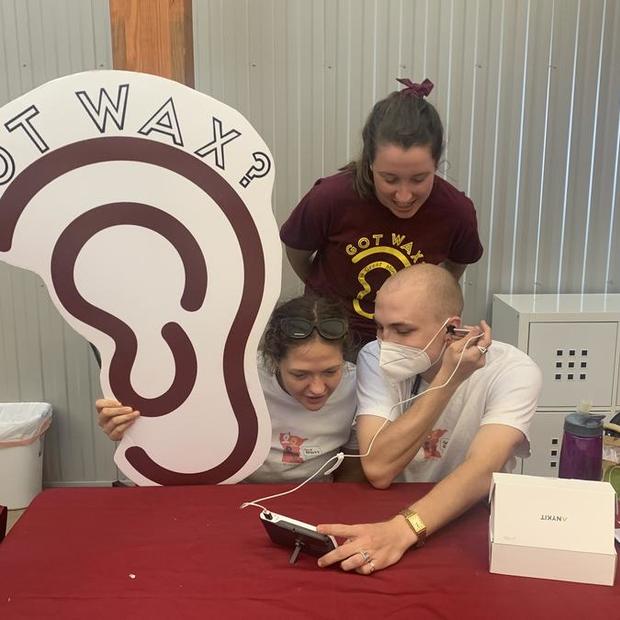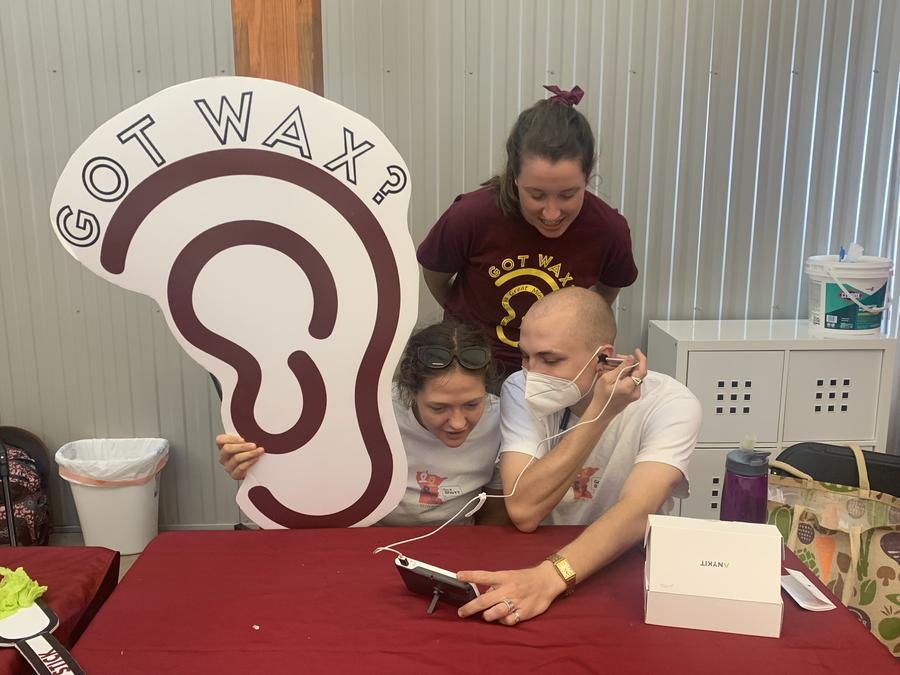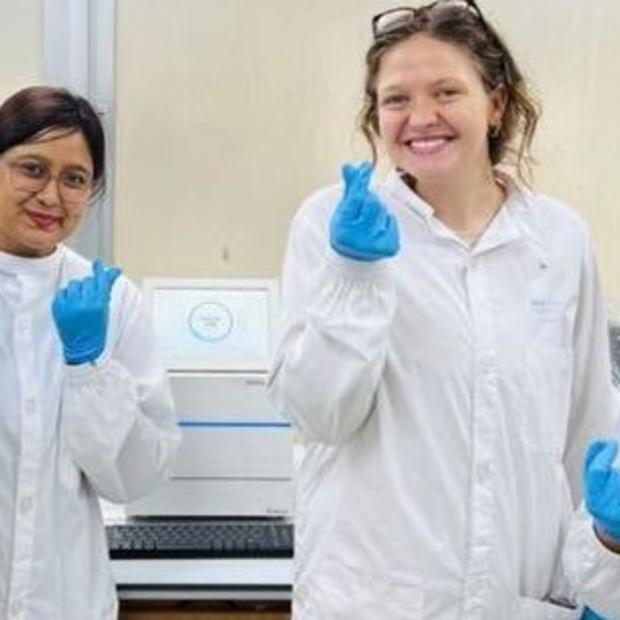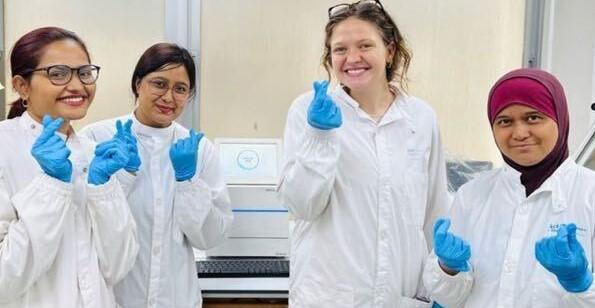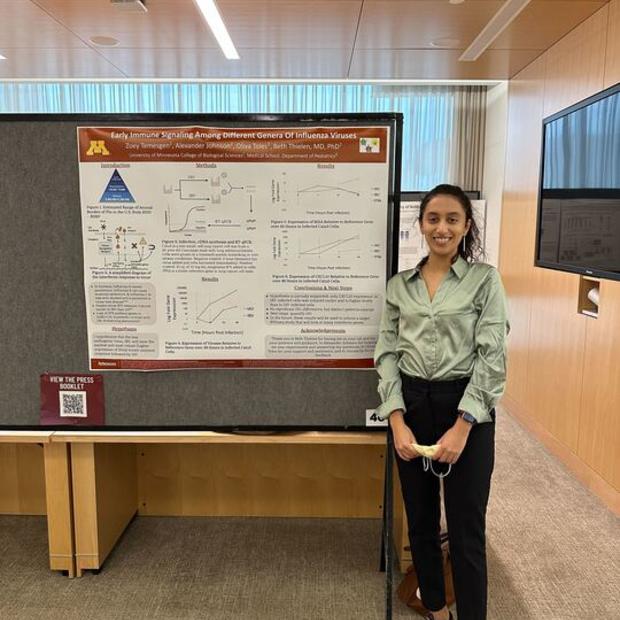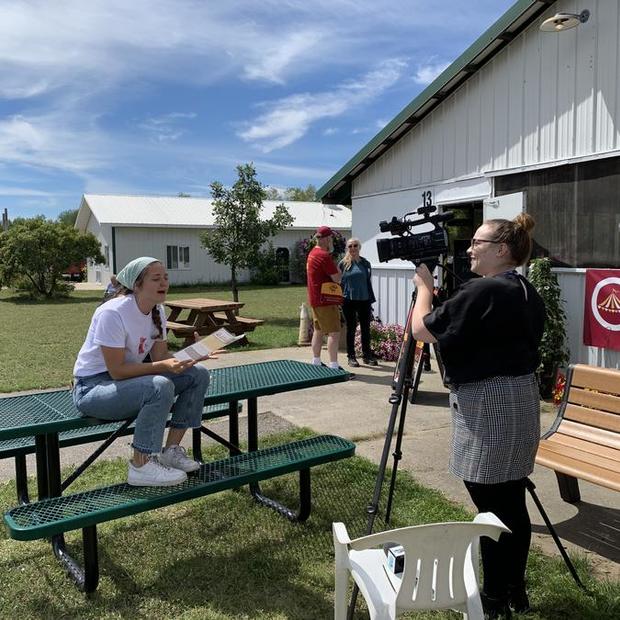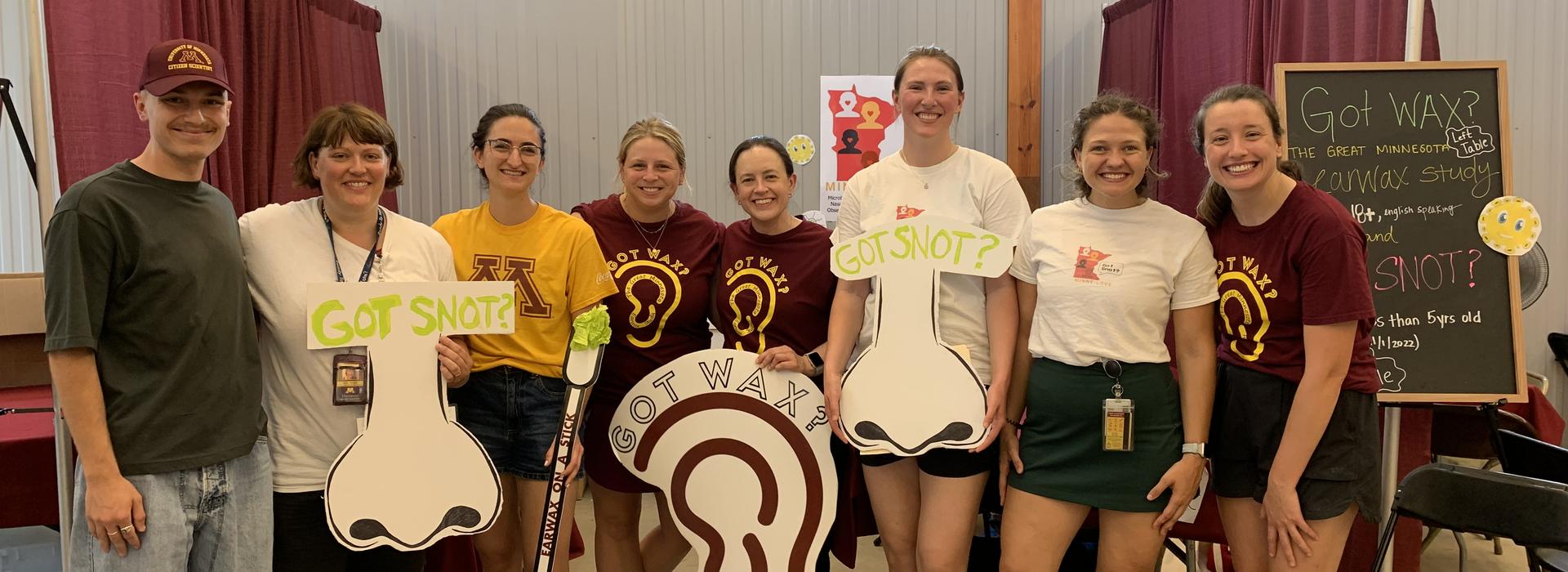
Thielen Lab
Dr. Thielen’s academic work encompasses both an active adult and pediatric clinical infectious diseases practice and a research program focused on host-pathogen interactions in the human respiratory tract, in particular innate immune signaling pathways induced by viral infections. Her lab is particularly interested in understanding the factors that influence the severity of respiratory viral infections, including viral sequence variants, respiratory microbiota composition and host genetics.
Contact Us
Reach Out!
If you have questions about the lab, please reach out to either Dr. Thielen or Bart:
- Dr. Beth Thielen, MD, PhD (thie0149@umn.edu)
- Bart Theelen, PhD, Lab Manager (theel012@umn.edu)
Find Us on Social Media!
X (formerly twitter): @thielenlab
Instagram: @thielenlab and @bethkthielen
LinkedIn: Beth Thielen
Find Us on the Web!
MINNE-LOVE Pediatrics Respiratory Virus and Microbiome Study
minnelove@umn.edu
Household Respiratory Virus Study
MINNELOVE2@umn.edu
About Us
Respiratory Viruses

What are viruses?
A virus is a type of microscopic infectious agent. Unlike bacteria and viruses, viruses can only reproduce or make more of itself by infecting other types of cells. Scientists have identified many different types of viruses that can infect different types of cells, ranging from bacteria to plants to animals including people.
What are Respiratory Viruses?
Respiratory viruses are viruses the primarily infect the cells that line the respiratory tract. This can include the nose, mouth, throat, sinuses, airways and lungs.
The symptoms caused by different respiratory viruses are often quite similar. Doctors classify symptoms into two main groups:
- Local symptoms: These are symptoms that affect primarily the body part where the infection started. They include runny nose, sore throat, cough, wheeze and shortness of breath.
Systemic symptoms: These are symptoms that affect the whole body such as fevers, chills or muscle aches and are usually cause by your immune system’s response to the virus.
Not all people are affected in a same way by a particular virus. The same virus can cause mild or no symptoms in some people and severe symptoms in others. The Thielen lab is studying the factors that lead to these differences.
Bacteria
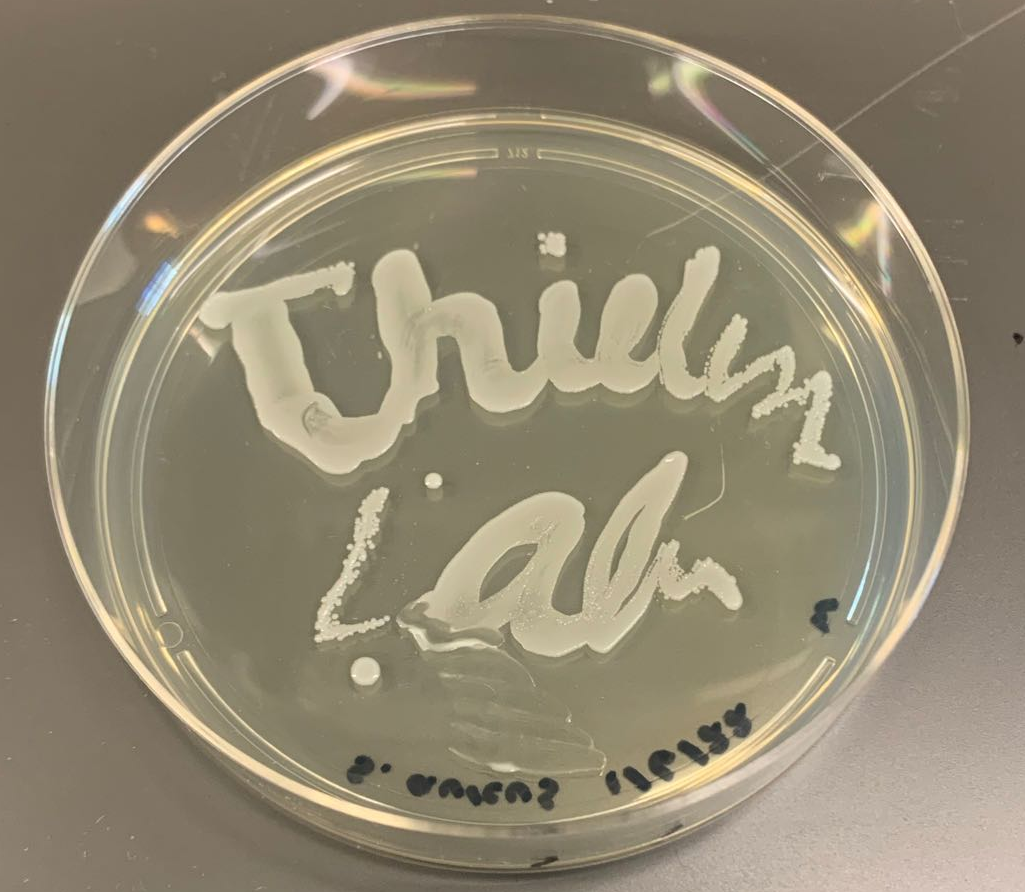
Although the primary focus of our lab may be respiratory viruses, some of our work involves the use of different bacteria.
Bacteria are microscopic single celled organisms that live all around and even inside of us! To learn more about the bacteria that exist on and inside our body check out the Respiratory Microbiome page.
These small organisms can be useful for a lot of different experiments in the laboratory. We use them in order to model the bacterial communities from our bodies in a lab environment. This is accomplished through something called a coculture, where bacteria are grown alongside human cells and/or viruses so that we can see how they interact and model some of the mechanisms that occur within our body that may cause us to resist or become susceptible to different kinds of viral infections.
Bacteria are also useful in a laboratory setting because they can be grown relatively easily and in large quantities, this makes them perfect for generating large amounts of DNA, specifically genes, which we can use in our work with respiratory viruses.
To learn more about some of the bacteria we use in the lab, use the links below:
Respiratory Microbiome

What is the microbiome? Your microbiome is a collection of all the bacteria, viruses, and fungus within your body and outside your body that are too small for us to see.
What is the respiratory microbiome? The respiratory microbiota is the microbial community consisting of a complex variety of bacteria, viruses, and fungi found in the lower respiratory tract of your lungs. Particularly they are located on the mucous layer and the inner skin surfaces.
The bacteria in our lungs help to digest our food, regulate our immune system, protect against other bacteria that cause disease, and produce B vitamins including B12, thiamine and riboflavin, and Vitamin K, which is needed for the blood.
